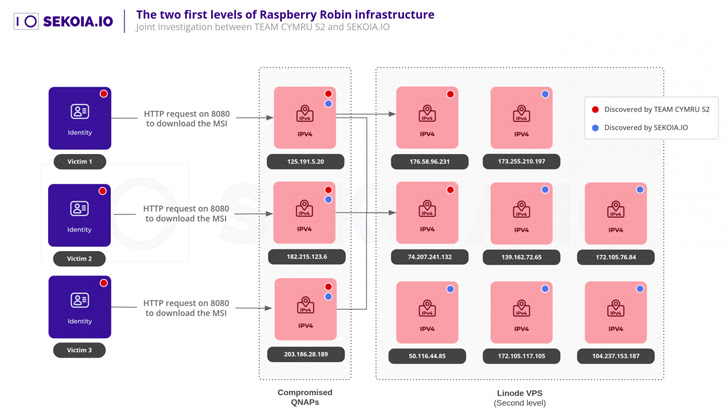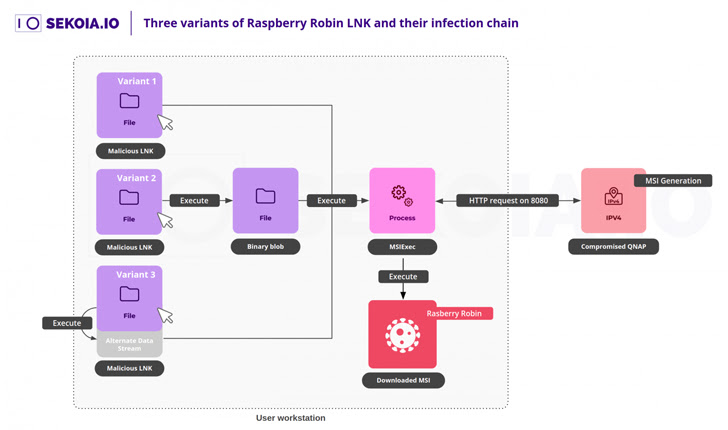New Analysis Reveals Raspberry Robin Can be Repurposed by Other Threat Actors
A new analysis of Raspberry Robin’s attack infrastructure has revealed that it’s possible for other threat actors to repurpose the infections for their own malicious activities, making it an even more potent threat.
Raspberry Robin (aka QNAP worm), attributed to a threat actor dubbed DEV-0856, is malware that has increasingly come under the radar for being used in attacks aimed at finance, government, insurance, and telecom entities.
Given its use multiple threat actors to drop a wide range of payloads such as SocGholish, Bumblebee, TrueBot, IcedID, and LockBit ransomware, it’s suspected to be a pay-per-install (PPI) botnet capable of serving next-stage payloads.
Raspberry Robin, notably, employs infected USB drives as a propagation mechanism and leverages breached QNAP network-attached storage (NAS) devices as first-level command-and-control (C2).
Cybersecurity firm SEKOIA said it was able to identify at least eight virtual private servers (VPSs) hosted on Linode that function as a second C2 layer that likely act as forward proxies to the next as-yet-unknown tier.
“Each compromised QNAP seems to act as a validator and forwarder,” the France-based company said. “If the received request is valid, it is redirected to an upper level of infrastructure.”
The attack chain thus unfolds as follows: When a user inserts the USB drive and launches a Windows shortcut (.LNK) file, the msiexec utility is launched, which, in turn, downloads the main obfuscated Raspberry Robin payload from the QNAP instance.
This reliance on msiexec to send out HTTP requests to fetch the malware makes it possible to hijack such requests to download another rogue MSI payload either by DNS hijacking attacks or purchasing previously known domains after their expiration.
One such domain is tiua[.]uk, which was registered in the early days of the campaign in late July 2021 and used as a C2 between September 22, 2021, and November 30, 2022, when it was suspended by the .UK registry.
“By pointing this domain to our sinkhole, we were able to obtain telemetry from one of the first domains used by Raspberry Robin operators,” the company said, adding it observed…



